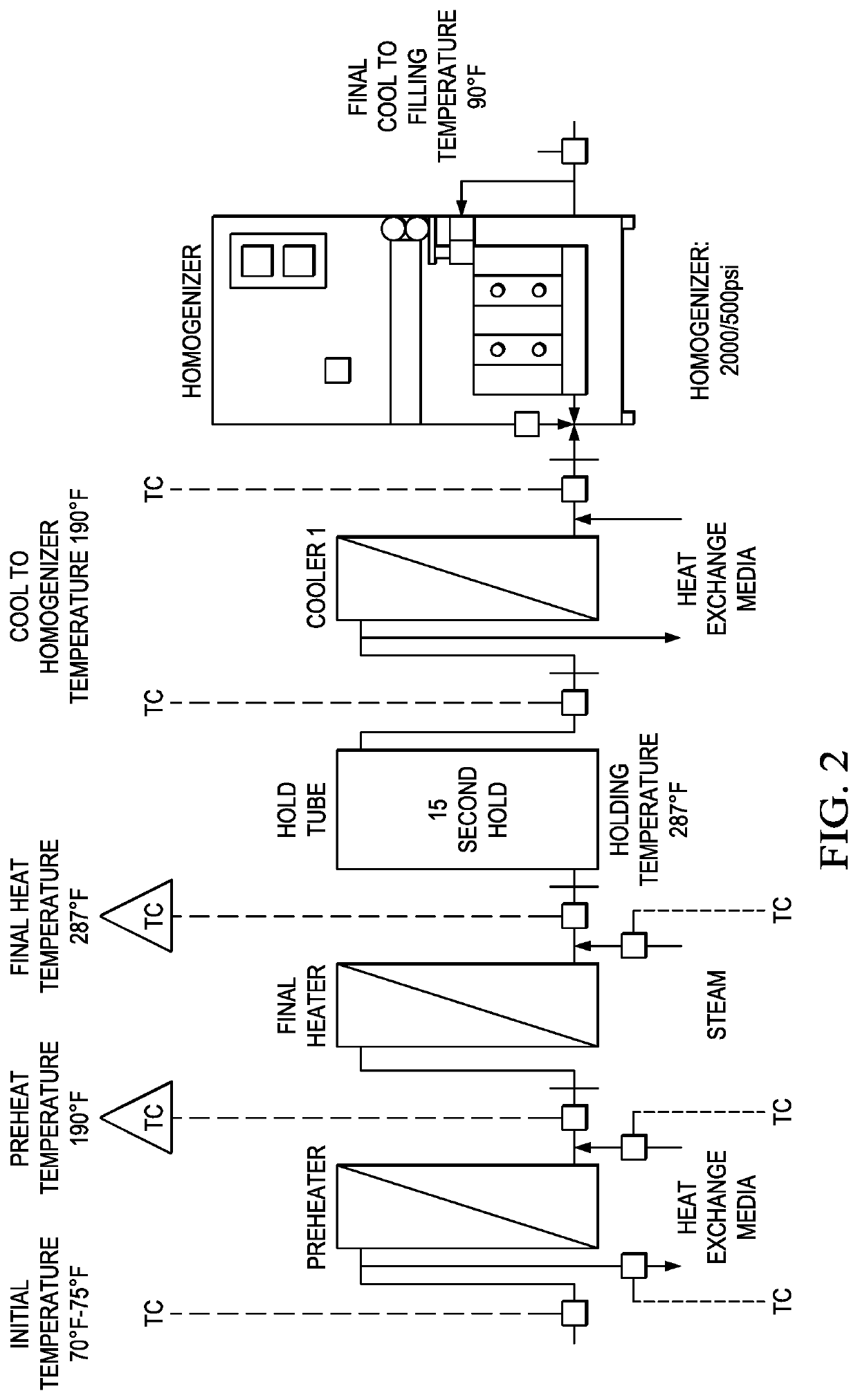Ready-to-drink plant protein beverage product and methods for making same
a plant protein beverage and beverage technology, applied in the field of beverages, can solve the problems of difficult inclusion of significant amounts of plant proteins into beverages, and achieve the effects of good mouthfeel, desirable taste, and high protein quality
- Summary
- Abstract
- Description
- Claims
- Application Information
AI Technical Summary
Benefits of technology
Problems solved by technology
Method used
Image
Examples
example 1
g of a Plant Protein Blend Beverage with Vanilla Flavor
[0071]A plant protein blend of pea protein isolate, rice protein isolate, and milk protein isolate was created to produce a plant protein blend comprising approximately 37% milk protein isolate, with the remainder of the plant protein blend composition comprising equal amounts of pea and rice proteins. During some test runs, the pea protein comprised an amino acid profile with a total glutamic acid level of about 17% glutamic acid, about 12% aspartic acid, about 9% arginine, about 9% leucine, and about 7.5% lysine; while the milk protein isolate comprised an amino acid profile with a total glutamic acid level of about 21% glutamic acid, about 9.5% arginine, about 9.5% leucine, about 7% aspartic acid, and about 7% lysine. To the plant protein blend, a sweetening component, gellan gum and dipotassium phosphate, cellulose, and carrageenan were added before adding about 88% reverse osmosis water, followed by a first mixing step with...
example 2
g of a Plant Protein Blend Beverage with Cocoa
[0073]A plant protein blend of pea protein isolate, rice protein isolate, and wheat protein, and sacha inchi protein concentrate was created to produce a plant protein blend comprising approximately 16.2% wheat protein, 11.5% sacha inchi protein, and the remainder comprising substantially equal (e.g., no more than 0.5% difference) parts pea and rice proteins. To the plant protein blend, a sweetening component, dipotassium phosphate, gellan gum, cellulose, and carrageenan were added before about 84% reverse osmosis water was used to hydrate the dry blend. Oil and lecithin (about 1:0.1) were then added using mixing steps as described in Example 1, which included the subsequent mixing in of a cocoa flavor. The hydrated blend then underwent the sequential high temperature treatment, homogenizing, cooling, and filling steps described in Example 1, above.
Additional Embodiments
[0074]The following descriptive embodiments are offered as further s...
PUM
 Login to View More
Login to View More Abstract
Description
Claims
Application Information
 Login to View More
Login to View More - R&D
- Intellectual Property
- Life Sciences
- Materials
- Tech Scout
- Unparalleled Data Quality
- Higher Quality Content
- 60% Fewer Hallucinations
Browse by: Latest US Patents, China's latest patents, Technical Efficacy Thesaurus, Application Domain, Technology Topic, Popular Technical Reports.
© 2025 PatSnap. All rights reserved.Legal|Privacy policy|Modern Slavery Act Transparency Statement|Sitemap|About US| Contact US: help@patsnap.com


